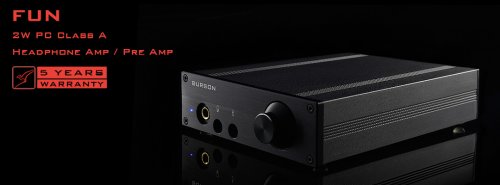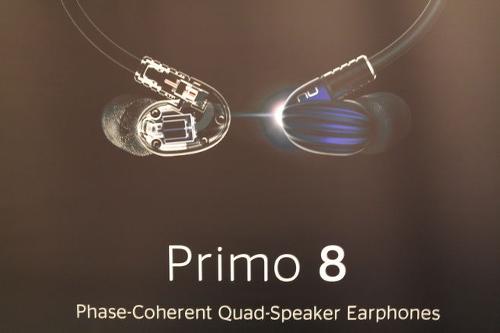


On of the best IEM's I've ever used
A Review On: 64Audio U12t
Review Topics:
About Me
About the product/expectations
Build/Design
Comfort/Fit
Sound
Isolation
Value
Provided free of charge during Head-Fi.org Tour
Normal Retail Price: $1999.00
Pros: Excellent bass response, fantastic mid-range detail, sparkling and extended highs
Cons: A bit heavy.
About Me
To get started, let me tell you a little about myself.
I’m a gigging musician (lead guitar/backup vocals), an audio forensic analyst, a novice sound engineer, and an avid music lover with a wide taste in music. Being an audio forensic analyst is a plus I find when reviewing audio products simple because I know what bad audio sounds like and usually know how to correct it. My experience allows me to be familiar with the limitations of my own ears and the equipment I’m using.
For the consumers, my perspective for all my IEM reviews will be based on these things. I won’t sugar coat things or make things sound better than they are. I’m just like you and I want good value for the money I pay for any product.
To the manufacturers, I’ll always give you an option to respond to any concerns such as quality that I have during my review. I’ll contact you directly and will do so before my review is published. I want to provide an honest and tangible review for your prospective customers without being unfair to you as a manufacturer.
I’ll always be fair and my review will be based on my perspective and my experience.
Now on to the important stuff.
About the product/expectations
I received the U12t on a tour here at Head-Fi.org. The tour was courtesy of 64Audio and organized by Barra.
I am a founding member and the lead guitarist for the hard rock band Rīvul. I'm an endorsed artist for InEarz and currently my on stage performance and practice IEM's are a custom Euphoria.
My trial of these wasn't to replace or eliminate any of my current lineup of IEM's, but possibly to complement my collection.
Build/Design
The build quality of the U12t is outstanding, very much in the TOTL realm. The metal casing of these makes the monitors feel very sturdy, but just a bit heavy in my ear.
The 64Audio stock cable is really good. I compared the current stock cable to an older 64Audio stock cable that I have and the newer ones are actually much better. So there has definitely been some improvements. Since I also had the Trio in my tour kit, I swapped with the premium cable provided with the Trio for this review because I found the sound stage to be better with slightly better clarity. I definitely recommend using the stock cable for a while and then upgrading to a more premium cable.
Comfort/Fit
I found the form factor and size of the U12t to be a very good fit for my ears. But I recently purchased a 64Audio U10 and found the design to fit my ear better than the new design. However, I had absolutely no issues with wearing them for hours with little to no wearing fatigue.
Sound
The sound of these are definitely in the TOTL realm and probably in the end game realm for a lot of people. I found I preferred the m20 module versus the m15 modules and so my review is from this perspective.
The clarity was amazing to say the least. The low end was tight with a very natural if not sometimes quick decay. The mids felt rich, but also sounded like they sat just slightly behind the lows and highs. Not a V shape signature but just a very slight U shape. Compared to the Trio, the U12t is definitely more neutral sounding.
Source didn't matter much to the U12t, in contrast to the Trio, which seemed almost finicky and starving for a better source. So the U12t should work for a wide range of people and a wide range of sources. Up to this review, I've never used Apex or Adel tech in an IEM so this was new to me. I did however find that it works well, I found myself listening at much lower volumes with the same fullness in sound. But I suppose I'm too used to a specific volume, because I typically listened during this trial at just a hair under my usual volumes.
Compared to UE900s there was no doubt that the U12t had more clarity, more separation, and better soundstage. The U12t lows were tighter, and extended slightly lower into the sub-bass region. The mids were very comparable with the U12t just edging out the UE900s in clarity. The highs of course though is where the U12t basically put the UE900s down for the count. The TIA high/high-mid drivers in the U12t are really something. Never sibilant, never harsh, pretty much perfectly tuned to provide the needed sparkle and perfectly complement the lows and mids.
In comparison with the Trio, the U12t is definitely more neutral, but not as neutral sounding as the U10. For critical listening with a bit of excitement, the U12t wins in these 3.
In comparison with U10, the U12t is a richer sounding IEM. The U10 is very good and to my ears very neutral sounding across the board. The U10 is far from boring, but the U12t is much more exciting. The the lows of the U12t are deeper, fuller and there's more attack. The mids are just a bit richer, but again it's the high's that really make the U12t shine. There's something to be said for these TIA drivers.
I used the U12t as a stage monitor during part of a practice session with my band and found there was too much clarity, LOL. I realized my playing technique as well as our other guitarist's technique and both of our tones needed improvement. Simply put, I heard some things that had to be corrected. I switched back to my InEarz Euphoria after the changes and was amazed at the difference the changes made. For critical listening, even on stage or studio, the U12t would work well, but the overall brightness in the high end, for me didn't do it. In a 4 hour show, clarity is very important but so is ear fatigue, with that being said... In my setup I'm not sure I could use the U12t for stage monitors without EQing them. However one could argue that it's better to have those highs and pull them back than not have them at all and try to boost.
I would describe the U12t sound quality to be one of the best IEM's I've ever used. Near perfection. But understand what you're going to use them for.
Isolation
Isolation and fit was very good, not as good as a custom but definitely on par with most mid to high end universal IEM's. I would have liked to try these with a MAM if it's compatible or a full plug just to see the difference in the isolation and overall sound.
Value
I think at the price point of $2000, the U12t would be out of reach for a lot of the people that I know. But for those that take their music or craft serious, it's probably a very worthwhile investment. I think for me that a custom A12t would be more to my liking due to the weight of the U12t. So bottom line are they worth the current asking price... yes. If you can afford them, then you won't be dissatisfied with your purchase. But it amazes me that these TOTL IEM's keep pushing the envelope of what the best really is.
Good job 64Audio.


































 As for the weight, I would say it feels heavy compared to the previous 64 audio' line because of plastic shells but comparing to other TOTL IEMs, the weight is about average
As for the weight, I would say it feels heavy compared to the previous 64 audio' line because of plastic shells but comparing to other TOTL IEMs, the weight is about average 








